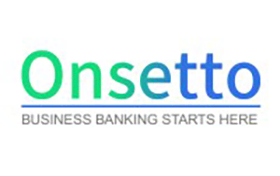For decades, banks have competed fiercely for commercial deposits, often emphasizing pricing, digital onboarding and treasury services as their growth levers. Yet a stubborn bottleneck persists — a long-standing challenge in commercial banking: the complexity of moving a business’s primary operating account.
Commercial deposits are among the stickiest and most profitable relationships in banking. But ask any director how often prospective clients actually move their primary account, and the answer is usually “not often.” The reason lies in how switching has traditionally been done.
The Primacy Problem
Transferring a business operating account has traditionally been an operationally complex and resource-heavy process. Businesses must:
- 1. Redirect payroll and merchant services.
- 2. Reroute customer payments.
- 3. Notify dozens of accounts payable (AP) and accounts receivable (AR) vendors
- 4. Time the closure of legacy accounts.
Handled this way, migration can take months — if the bank is lucky. What begins as an attractive idea often stalls once businesses recognize the disruption and complexity involved. The result? Banks invest heavily in relationship managers and treasury platforms, but primacy remains elusive.
The cost of this inertia is significant. The U.S. Small Business Administration reports there are more than 32 million small and midsize businesses (SMBs) in the country. Even if only 10% to 15% switch their primary banking relationship each year, that represents 3 million to 5 million opportunities annually. Yet most institutions capture only a fraction of this market.
Why This Is Imperative for Unlocking Primacy and Growth
Primacy is not just an operational milestone. It is a strategic driver of profitability. A McKinsey analysis found that primary commercial banking relationships can generate up to five times more revenue than secondary ones. These relationships fuel deposits, cross-sell treasury services and create durable client loyalty.
But primacy only materializes once operating accounts move. Until then, bankers hesitate to introduce treasury solutions, and businesses hesitate to deepen the relationship. By treating switching as a strategic growth lever, banks can unlock both deposit stability and downstream revenue opportunities.
Lessons From Consumer Banking
The consumer side of banking already solved a similar problem. Not long ago, direct deposit switching was a major barrier to account mobility. Automation changed that dynamic, fueling challenger banks’ ability to acquire millions of customers rapidly.
Commercial banking has lagged behind. Businesses still face the same paper-heavy processes that existed decades ago. This gap represents both a risk and an opportunity. Institutions that modernize switching will capture primacy from those that do not.
The Technology Imperative
For too long, banks have approached commercial account switching with the same manual methods that defined the process decades ago. Relationship managers often juggle spreadsheets, vendor lists and phone calls in hopes of piecing together a migration plan. But in today’s environment, clinging to these outdated tools virtually guarantees outdated results.
Commercial banking is operating in a modern tech era. Businesses expect their financial partners to mirror the seamless, digital-first experiences they encounter in every other aspect of commerce. If the bank’s switching process is still paper-heavy and error-prone, clients will notice, and competitors that can deliver speed and simplicity will win those relationships.
Executive management should recognize that leveraging technology is not optional; it is the path to growth and primacy. Advanced platforms can capture, organize and automate the many dependencies tied to a business operating account — payroll, payments, AR/AP and more. The payoff is more than efficiency. It accelerates time-to-funding, empowers relationship managers to deepen conversations earlier and ensures the bank doesn’t lose momentum at the most critical moment in the relationship lifecycle.
A Call to Action
Commercial account switching is not just a back-office process. It is the gateway to deeper commercial relationships and a missed opportunity if neglected. By institutionalizing a switching playbook with clear workflows, accountability and banker enablement, banks can:
- Increase the win rate of competitive takeaways.
- Compress time-to-funding for new accounts.
- Unlock earlier cross-sell into treasury and payments.
- Improve banker productivity without adding headcount.
For banks, the message is clear. Switching deserves a place on the strategic agenda. The institutions that control the switching experience will not just capture deposits; they will capture primacy, loyalty and long-term profitability.




